Empowering your aquatic journey with science, skill, and passion
At KingFin Aquatics, our mission is to help hobbyists, new and experienced alike build sustainable, healthy, and beautiful freshwater ecosystems. In this post, we’ll go deep into the science and practical steps behind successful freshwater fish keeping: from water chemistry to aquascaping, disease prevention, and long-term ecosystem balance.
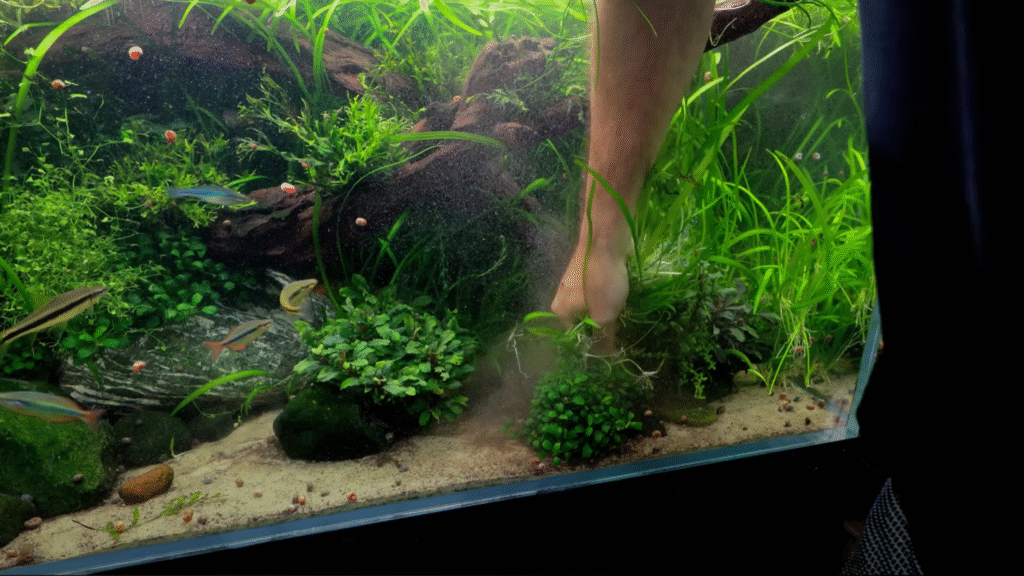
Foundational Principles: The Aquarium as an Ecosystem
An aquarium is not merely a container for fish, it’s a micro-ecosystem. Every organism, chemical parameter, and inflow/outflow interacts to determine stability and health.
- Fish waste produces ammonia (NH₃/NH₄⁺), which is toxic at low concentrations.
- Beneficial nitrifying bacteria convert ammonia → nitrite (NO₂⁻) → nitrate (NO₃⁻).
- Plants, substrate microbes, and occasional water exchanges help consume nitrates and recycle nutrients.
- Physical components (substrate, rocks, wood) provide surface area for beneficial microbes and shelter for fish.
If any part of this system is neglected—e.g. insufficient bacteria, unchecked waste, improper stocking—the balance collapses, often causing disease, stress, or fish losses.
The RSPCA notes that caring properly for freshwater fish requires “meeting their complex biological, environmental and behavioural needs” with adequate preparation, time, and care. RSPCA
Thus, before buying fish, the hobbyist should plan for system stability, not just decoration or aesthetics.
Setting Up the Tank: Equipment, Cycling & Initial Steps
Learn the essential steps for setting up your aquarium, from choosing equipment to cycling the tank and preparing a healthy environment for your fish.
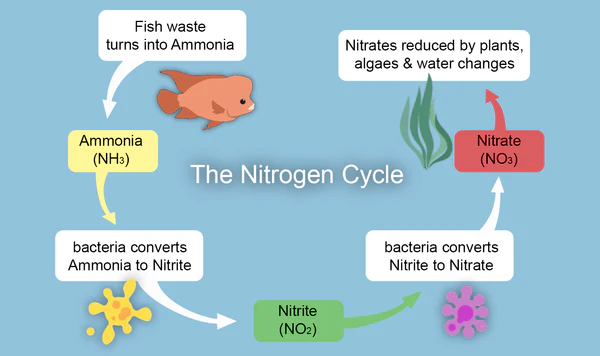
Choosing the Tank & Supporting Gear
- Tank size matters: Larger water volumes are more stable in temperature and chemistry. PetMD recommends ~ 30 gallons (~ 114 L) or more for beginners, because small tanks are more prone to rapid fluctuations. PetMD
- Filtration: A canister filter, hang-on-back (HOB) filter, or internal power filter ensures mechanical, chemical, and biological filtration.
- Heater & thermostat: For tropical fish, maintain stable temperatures (commonly ~ 24–28 °C, or ~ 75–82 °F). Tetra
- Lighting & substrate: Depending on plant choices, you may require moderate to high lighting, and a nutrient-rich substrate for plants.
- Test kits: At minimum, kits to measure pH, ammonia, nitrite, and nitrate are essential.
- Hoses, siphons, dechlorinator/conditioner, nets, aquarium-safe rocks or decor.
The Nitrogen Cycle & Fishless Cycling
Before introducing fish, the tank must be “cycled” so that beneficial bacteria colonize and can safely process waste.
- Add a source of ammonia (pure NH₄⁺, or fishless cycling products) to feed nitrifiers.
- Over ~2–4 weeks, bacteria convert ammonia → nitrite → nitrate.
- Monitor concentrations until ammonia and nitrite are zero and nitrates remain stable at low levels.
- Some hobbyists add “starter bacteria” to accelerate the cycle; others allow natural colonization.
- Avoid adding fish before ammonia and nitrite levels drop, or risk “new tank syndrome” (stress, ammonia poisoning). Petco’s guidelines recommend testing water weekly and waiting until clarity and stability are achieved.
In Aqueon’s “Ultimate Fishkeeping Guide,” they caution against doing large water changes prematurely during cycling, as these can prolong bacterial bloom by adding new nutrients.
The graph below illustrates the nitrogen cycle, a critical process in establishing and maintaining a healthy aquarium. The cycle begins when a source of ammonia is introduced into the water—this can come from fish waste, uneaten food, or even directly from a fish itself.
During the first two weeks, it is important to closely monitor ammonia levels using a reliable test kit, such as the API Freshwater Master Kit or the NT Labs Aquarium Test Kit. Within 7–10 days, nitrite will usually begin to appear in the water. This occurs because beneficial nitrifying bacteria (such as Nitrosomonas) consume ammonia and convert it into nitrite.
Although nitrite is generally less toxic than ammonia, it is still harmful to fish and invertebrates, particularly with prolonged exposure. After several more days, another group of bacteria (primarily Nitrobacter and Nitrospira) begin converting nitrite into nitrate. Nitrate is the least toxic byproduct of the nitrogen cycle, but it can still be dangerous at elevated levels over time.
Regular water changes are therefore essential to maintaining a balanced ecosystem. Water changes not only dilute excess nitrates but also replenish vital minerals such as calcium and magnesium, which are necessary for healthy fish growth and overall aquarium stability.
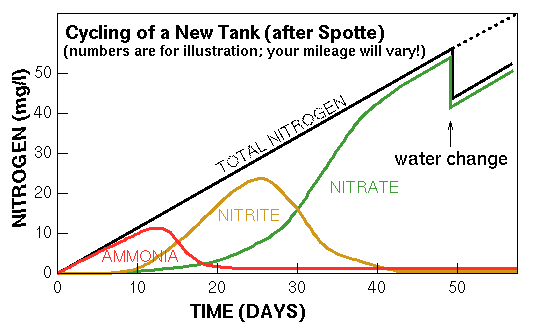
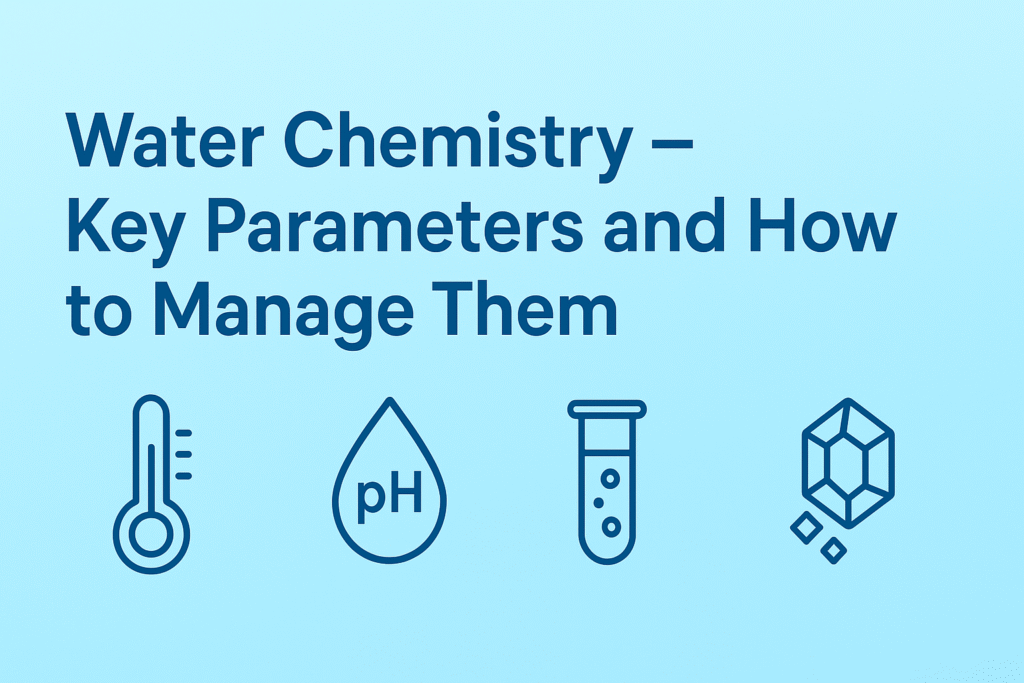
Water Chemistry: Key Parameters & How to Manage Them
Proper water chemistry underpins fish health. Let’s break down the main parameters and how to maintain them.
*Note: These ranges vary significantly by species (e.g. Amazonian fish, African Rift lake cichlids, Southeast Asian species). Always research species-specific requirements before purchase.
Stability over perfection: It is better to maintain stable, “slightly off-ideal” parameters than to chase perfect numbers with large swings. Sudden shifts stress fish more than moderate but consistent conditions.
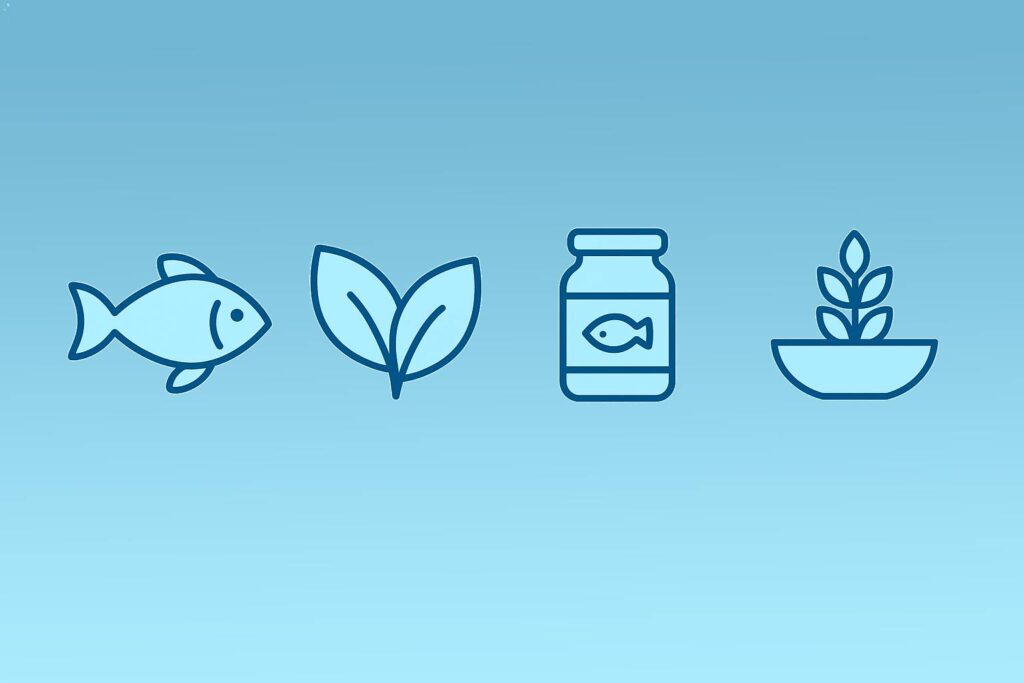
Nutrition & Feeding Strategies
Feeding is deceptively complex. It’s one of the leading causes of water-quality problems when mismanaged.
Types of Fish Food
- Flakes & pellets: Staple diets, typically commercial. Choose high quality with good protein/fat balance.
- Frozen / freeze-dried: Bloodworms, brine shrimp, daphnia, mosquito larvae—great for variety and enrichment.
- Live foods: Tubifex, artemia, daphnia—excellent nutrition and stimulation, though riskier in terms of disease introduction.
- Vegetable matter: Spirulina, blanched spinach, peas, zucchini; many omnivores and herbivores benefit.
Feeding Principles & Frequency
- “What they can eat in ~2–3 minutes” is a common rule: overfeeding adds excess waste.
- Multiple small feedings (2–3 times per day) often lead to better digestion than one large meal.
- Fasting day(s): Many aquarists skip feeding 1 day/week to help fish clear waste.
- Avoid dead/deteriorated food: Remove uneaten food within minutes to prevent ammonia spikes.
- Species-specific diets: Carnivores and herbivores require distinct nutrient profiles. For example, cichlids often need higher protein; algae eaters require fibrous vegetable content.
In PetMD’s 30-Day Guide, dietary balance is emphasized as part of the successful acclimation and growth of new fish.
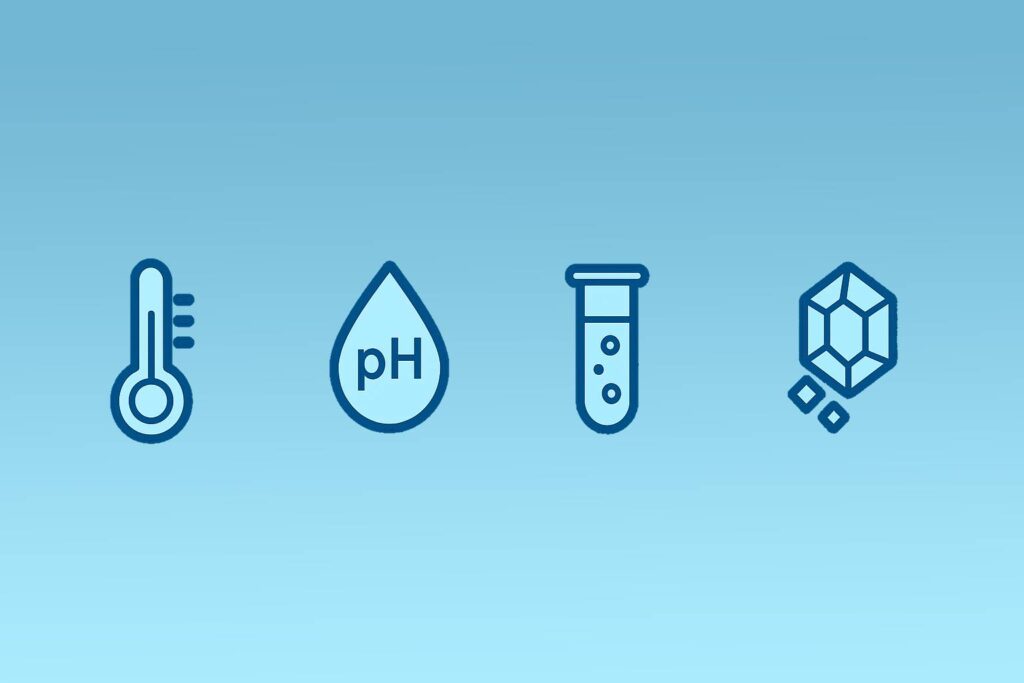
Aquascaping & Habitat Design (Functional + Aesthetic)
Aquascaping isn’t just decoration-it’s about functional habitat design. Done well, it supports fish behavior, hides, territories, and natural dynamics.
What Is Aquascaping?
Aquascaping is the arrangement of hardscape (rocks, driftwood), substrate, and plants to create an aesthetic, sustainable underwater landscape. It’s often described as “underwater gardening.”
Styles include:
- Nature / Japanese style (inspired by natural landscapes, asymmetric, minimalistic)
- Dutch style (dense, colorful plant layouts, geometric terraces)
- Biotope (replicates a natural ecosystem—plants, fish, substrate, water chemistry from a particular region)
- Functional Aquascaping emphasizes that every element has purpose—not just beauty (shelter, spawning space, microcurrent zones)
Designing with Function in Mind
- Caves, overhangs, hiding spots help reduce stress and aggression (especially in territorial species).
- Open swim zones vs. planted zones should balance swimming space and cover.
- Flow paths: Use currents to gently move water, reduce dead zones, and mimic natural flows.
- Focal points & depth cues: Use the rule of thirds, golden ratio, and asymmetry to make composition compelling.
- Layering plant heights: Taller plants at back, shorter in front—creates depth and hides equipment.
- Substrate gradients: Nutrient-rich substrate near roots, inert layer above-optimizes root growth.
- Propagation & trimming strategy: Aquascapes evolve; trimming, replanting, and adjusting hardscape is normal.
The “art and science” of aquascaping is captured in both skill and the ecosystem’s needs-see Tannin Aquatics on how structure must support fish comfort, not just aesthetics.
Scientific reviews also highlight aquascaping’s dual nature-art and evolving biological system.

Stocking & Compatability
Even if your water chemistry and decor are perfect, incompatible fishes can doom a tank.
Stocking Basics
- The “inch-per-gallon” rule is outdated—don’t rely on it. Instead, consider fish adult size, bioload, behavior, and space requirements.
- Start slow: Introduce a few fish at a time, to allow the biological filter to adjust. we recommend waiting ~1 week between additions.
- Avoid overstocking: Overcrowded tanks lead to elevated ammonia/nitrate, stress, disease, and aggression. Aggressive territorial fish do better in larger groups but be careful not to overstock.
Compatibility Checks
- Temperament: Peaceful community, semi-aggressive, or aggressive—mixing these can lead to bullying or territorial disputes.
- Size & speed: Fast, large fish may outcompete slow, small ones.
- Diet: Don’t mix strict carnivores and herbivores indiscriminately.
- Water parameter tolerance: Some fish need soft, acidic water (e.g. tetras), others hard, alkaline (e.g. cichlids).
- Territorial species: Use visual barriers (plants, rocks) to break lines of sight and reduce aggression.
Many retailer guides include compatibility and water quality guides to help with stocking decisions.
A classic example: neon tetras, though very popular, require pH ~ 6.0–7.0, soft water, and thrive better in planted, low-stress tanks with minimal aggressive species.
Here is our compatibility chart, as always if you find any issues or have any questions feel free to contact us via email admin@kingfinaquatics.com

Maintenance Routines & Troubleshooting
Consistency is your best friend. Even the most beautifully planted tank will degrade without regular upkeep.
Daily / Weekly / Monthly Tasks
| Frequency | Tasks |
| Daily | Observe fish behavior and health (gasping, spots, unusual swimming) |
| Weekly | 1. Test water parameters 2. Perform ~15–25 % water change 3. Clean glass / remove algae 4. Siphon substrate |
| Monthly / Bi-monthly | Rinse filter media (in tank water, not tap water), prune plants, inspect equipment, deep clean decor |
| Occasional | Replace worn filter media, rearrange scape, replace aging bulbs, inspect for leaks |
Also, avoid using soaps or chemicals when cleaning tank parts—these can leave residues that kill beneficial bacteria. Vinegar (50:50 with water) is often safer for glass and equipment cleaning
Common Issues & Solutions
- Algae blooms: Often due to excess nutrients and light. Solutions: reduce light duration/intensity, increase water changes, introduce algae-eating species, ensure good flow.
- Cloudy water / bacteria bloom: Happens after substrate disturbance or overfeeding. Wait it out, or do small water changes to gradually restore balance.
- Parameter spikes: If ammonia or nitrite appears, perform a partial water change (20–30 %), double-check filter function, and reduce feeding temporarily. Many hobbyists advise immediate water change if ammonia > 0.25 ppm.
- Fish aggression: Rearrange decor to break territories, and if necessary, relocate overly aggressive fish.

Health, Disease, and Quarantine Protocols
One of the biggest risks in aquarium keeping is disease introduction or spread.
Quarantine Best Practices
- Maintain a separate quarantine tank (10–30 L, warmed and filtered).
- Quarantine new fish for at least 14–30 days before introducing them to your display tank.
- Observe for signs of illness (white spots, ragged fins, abnormal breathing) and treat in isolation.
We encourage the use of quarantining to reduce disease risk-especially important in planted, biotope and sensitive fish systems.
Common Diseases & Treatments
- Ichthyophthirius (“Ich”): White spots on fish; often triggered by stress or sudden changes. Treatment includes raising temperature, salt baths, and medications.
- Fungal or bacterial infections: Recognize by cotton-like patches, ulcers, frayed fins. Treat with targeted medications.
- Parasitic infestations: Use dips, medicated baths, or anti-parasitic medications (copper, formalin, etc.) based on the parasite type.
Some aquarists use salt baths/dips (0.1–0.5 %) for treating external parasites or nitrite stress. Note: not all species tolerate salt well, so research carefully.
Warning: Always follow manufacturer instructions for any medication. Remove activated carbon from filters when medicating, and ensure good aeration.
Monitoring & Early Symptom Recognition
Daily observation matters. Watch for:
- Clamped fins, lack of appetite, lethargy
- Erratic swimming, gasping at surface
- Spots, lesions, flashing (rubbing against objects)
- Sudden hiding or isolation
Early detection and prompt isolation + appropriate treatment increase survival rates dramatically.

Advanced Topics & Further Reading
If you’d like to continue your journey into freshwater fishkeeping, here are some advanced aquarium topics and trusted resources to explore. These cover everything from aquascaping techniques to water chemistry, filtration systems, and fish health—helping you expand your skills and create a thriving aquarium.
Topics:
- Breeding & spawning protocols for species (e.g. egg scatterers, mouthbrooders)
- CO₂ injection systems for high-light planted tanks
- Advanced filtration (e.g. fluidized beds, refugiums, denitrifiers)
- Biotope aquaria requiring strict adherence to region-based fish, plants, water chemistry.
- Aquascaping competitions & design theory: For example, Dutch & Nature styles, and aesthetic rules used in competitions.
- Scientific literature on ecotoxicology, fish stress physiology, microbial ecology
Reputable Resources:
- Aqueon’s Care Guides & Ultimate Fishkeeping Guide series Aqueon
- Fresh Water Systems’ maintenance articles Fresh Water Systems
- Tetra’s beginner guides Tetra
- RSPCA guidelines on freshwater fish care RSPCA
- Aquascaping theory resources (e.g. Hanna Instruments blog) blog.hannainst.com
- Monster Fish Keeper Forum

Conclusion
Mastering freshwater fish care is a blend of science, patience, observation, and continual learning. At KingFin Aquatics, we aim to not only supply quality products but also to cultivate confident hobbyists equipped to build thriving aquatic ecosystems.
Key takeaways:
- Focus first on system stability (cycling, filtration, water chemistry).
- Feed wisely and avoid overfeeding.
- Design your aquascape to serve both fish behavior and visual appeal.
- Stock gradually, mind compatibility, and maintain consistent routines.
- Quarantine new fish and act promptly when illness appears.
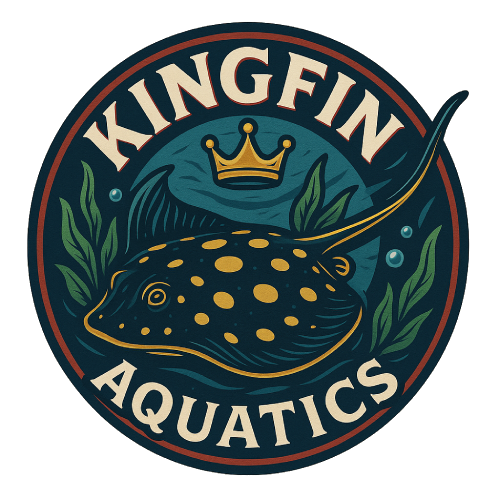
Leave a Reply